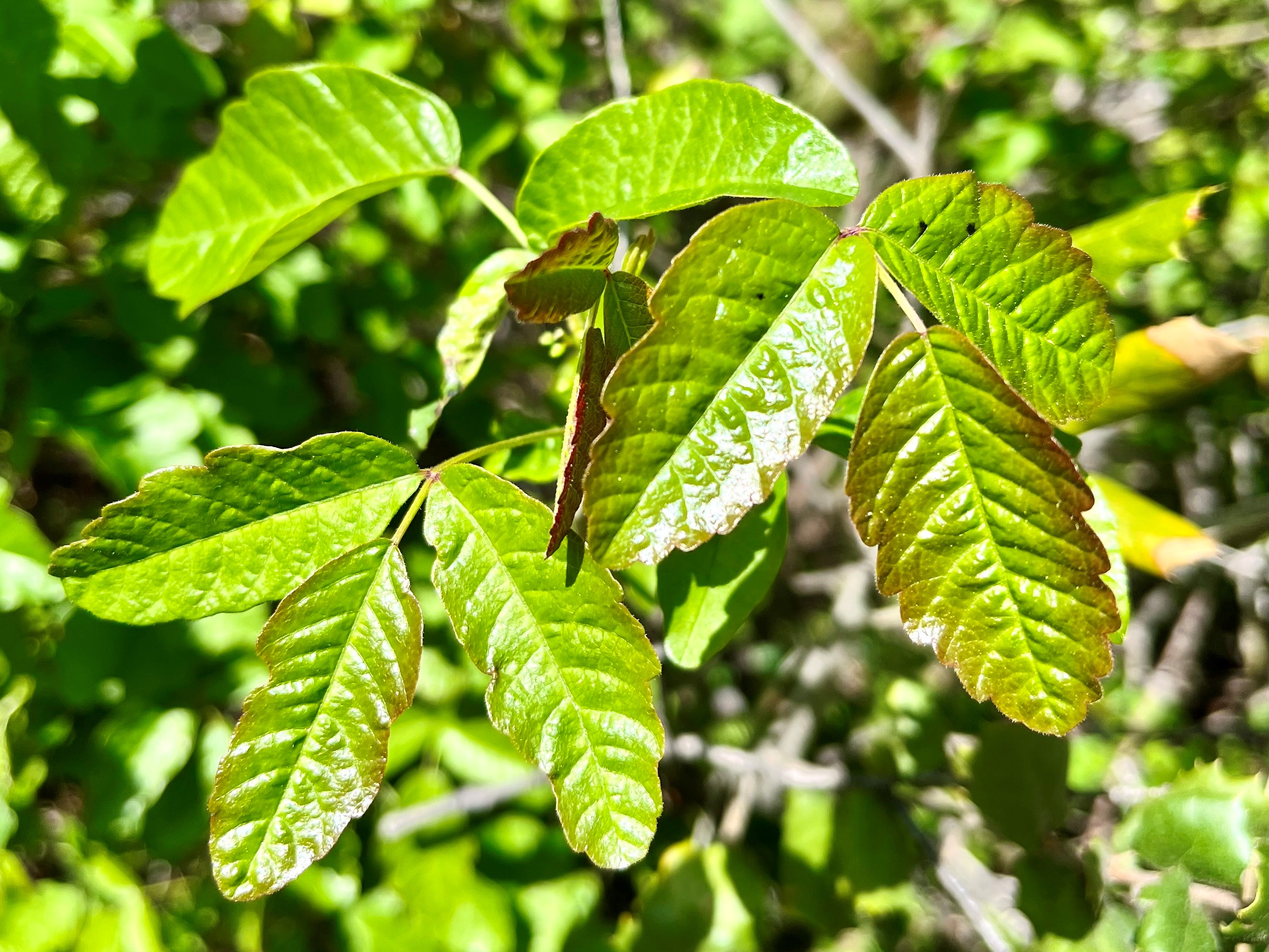Poison Oak is a poisonous plant found along California’s coasts, forests, grassy hillsides, and recreation areas. The oil from Poison Oak can cause an itchy rash, which then turns into water blisters. Things that have come in contact with the oil from Poison Oak can also cause an itchy rash (ex. clothing, shoes, pets, strollers, wheelchairs, tools, etc.). The rash then becomes water blisters. The serum from these blisters, however, does not transmit Poison Oak. Developing a Poison Oak rash after exposure is unpleasant for many people. Not to mention, repeated exposure increases sensitivity over time.

Identify Poison Oak
You can spot the plant all year long, though it changes color from green to crimson red in the fall.
- It grows into groups of three leaflets with the center leaflet typically growing longer than the other two
- It grows into a dense and leafy shrub, ranging from one to six feet high
- It has a vine-like appearance
- It has either glossy or dull leaves
- It’s typically green in the spring and changes to crimson red in the fall
Treat poison oak rash
- Apply calamine lotion to help stop the itching
- Apply over-the-counter steroid cream to treat dermatitis (skin inflammation)
- Apply rubbing alcohol or over-the-counter skin cleanser to wash away the oil
- Do not scratch
- Wash itchy and affected areas with lukewarm water right away
When to seek medical attention
- If the rash covers much of your body
- If you have many blisters or swelling–especially on your eyelids, face, or genitals
- If you have trouble breathing or swallowing
Prevent poison oak exposure
Poison Oak exposure is more common in warmer weather, when people are more likely to be outdoors. Learn how to prevent potential Poison Oak exposure.
Hiking attire to wear
- Closed-toe shoes or boots
- Hats and gloves
- Long-sleeved shirt
- Long pants
Hiking tips
- Do not burn Poison Oak as the smoke can cause irritation
- Stay on trails and away from bushes where Poison Oak may be present
- Wash your clothes, tools, strollers, wheelchairs, and pets after hiking outdoors as they may have Poison Oak oil on them



